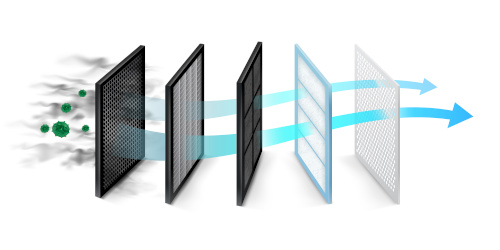As schools kick off the 2021-22 school year, the air is thick with questions — and with COVID-19 hesitancy. Will students and faculty have to wear masks? Will they have to show proof of vaccination against COVID-19? Will we see remote learning play a major role this year, as it did last year? How can we keep classrooms safe while the delta variant seems to be running rampant and vaccination rates lag behind national goals?
The unfortunate answer to all these questions is that there is no clear answer. Each state, and even each school district, is handling things differently in the U.S. In Florida for example, Governor DeSantis is threatening to withhold funding from schools that enforce mask mandates. Meanwhile, California has lifted its state-wide mask mandate for schools but highly encourages school districts to enforce their own policies.
An airborne virus doesn’t respect state borders, and the longer it’s allowed to circulate, the more likely the virus is to mutate into a new variant. Perhaps even one that ignores the protections of current vaccines. Which is why it’s important for schools to do everything in their power to protect students, faculty, and everyone else on their campuses.
Two types of protection
Protections against COVID-19 come in two general categories — active and passive. Active measures require actions like wearing a mask, staying six feet apart from other people, getting vaccinated, and so on. The individual person must take action to protect themselves and those around them. Active measures can be incredibly effective, but only when people actually follow them. Masks only work when you have them on, for example. And that, unfortunately, is why passive protections are vital to mitigating the damage COVID-19 causes going forward.
Passive precautions remove individual decisions from the equation by making the environment itself a safer place to be. These range from high-tech air filters that can remove contaminants and particulates to low-tech plexiglass dividers that keep people from breathing directly into one another’s face. For schools, making these sorts of environmental changes is absolutely paramount in increasing protection against the virus; getting an entire student population to keep masks on all day is next to impossible, so add a standalone HEPA filtration system to the ventilation system (especially one with ultraviolet germicidal irradiation) and protect the on-campus population without requiring them to take action.
That’s not to say that passive protections can or should replace active measures. In fact, the CDC recommends a combination of active and passive precautions in a layered approach. Implementing passive precautions like HEPA filtration doesn’t mean it’s safe to relax mask mandates or other active measures. It’s just added peace of mind–and exactly the sort of demonstrable change a school can point out to concerned parents when asked what precautions are being taken.
An evolving struggle
The battle against COVID-19 is far from over, and while the summer months have been an enjoyable return to some degree of normalcy, the truth is that we are one dangerous variant away from another full lockdown. While that may be grim, the good news is that the blueprint is already in place for dealing with the disease, and many of the same precautions that help mitigate the risk of COVID-19 work against old familiar foes like the common cold and the seasonal flu–just look at how mild the 2020/2021 flu season has been.
For school districts, this sort of universal protection should help encourage the budgetary spend on passive protective measures. Even if some miracle–like achieving 100 percent vaccination rates worldwide–wipes the SARS‑CoV‑2 virus from the planet, air filters and other passive precautions will still be doing their jobs protecting people from whatever the next threat is.
- Motivating students using the Self-Determination Theory - April 17, 2024
- Michigan Virtual’s statewide workgroup releasing AI guidance for K-12 educators - April 17, 2024
- 5 obstacles AI can help schools overcome - April 16, 2024

